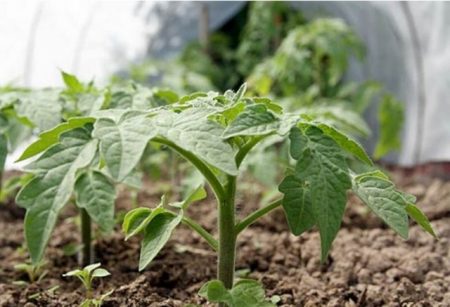
Residents of the southern regions for tomato greenhouses use only at the stage of growing seedlings. For the northern strip, without a shelter, a crop cannot be obtained. The climate is changing, and therefore, residents of the Moscow region increasingly have to use greenhouses for growing tomatoes. When to plant seedlings in them, which should be taken into account and what recommendations regarding agricultural technology exist, we will consider further.
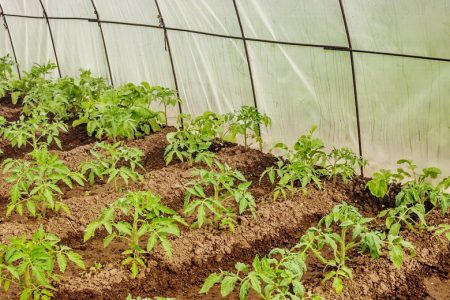
Content
The timing of planting tomato seedlings in a greenhouse in the suburbs
The main difference between a greenhouse and a greenhouse is the lack of artificial heating. Therefore, its protective functions are reduced and consist only in creating a greenhouse effect. The timing of transplanting seedlings in the suburbs is impossible to call exact, you need to determine them, focusing on the weather.
The soil at this point should warm up to +15. It is very important. Even if there is a 30-degree heat during the day, at night the indicator on the thermometer can be 0 or even lower.
Approximately, the landing is carried out from mid-May to early June, i.e. coincides in time with the recommended dates of landing in open ground in the southern lane.
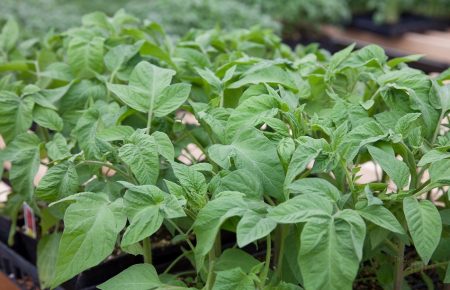
The material used for shelter also matters. The polycarbonate greenhouse warms up faster, so tomato seedlings can be planted in it about 2 weeks earlier than under a regular film.
Tomatoes grown in a greenhouse have many advantages:
- significantly reduced time for harvesting;
- plants are strong and powerful;
- they do not stretch, as when growing indoors, and most importantly, there is no adaptation period.
Soil preparation and premises
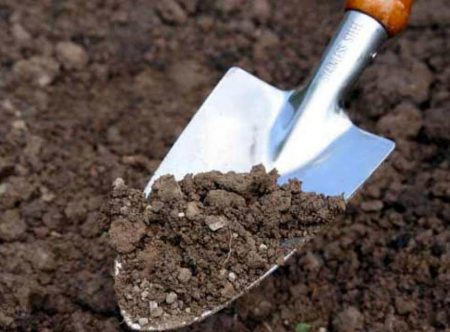
A greenhouse, unlike a greenhouse, is not a major construction, so a novice can do it independently. Although it is sometimes easier to buy ready-made in the store.
Whichever option you choose, follow these recommendations:
- the width of the greenhouse should not be more than a meter, this will make it more convenient to care for tomatoes;
- optimal greenhouse length up to 2 meters. Otherwise, the film may be damaged by gusts of wind or as a result of water accumulation after rain;
- the height of the greenhouse should be at least 50-80 cm, but you need to focus on the characteristics of the varieties that you are going to grow.
It is necessary to place the greenhouse in the sunniest place, and it is also advisable to make it right next to the house or any other room in order to protect it from the wind and make it even warmer.
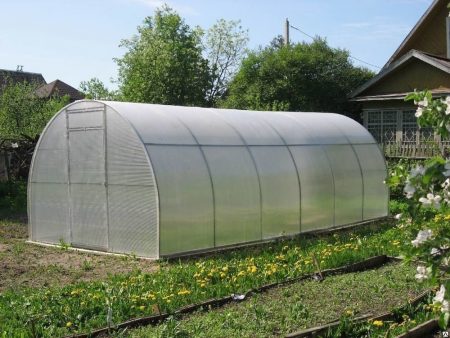
If garden soil will be used, it must be fertilized. The following mixtures are optimal for growing tomatoes in a greenhouse:
- garden land, peat and humus in equal shares;
- garden land, turf, peat in equal parts, half of the river sand and 50 grams of chalk per bucket of soil received.
Landing pattern and landing methods
Before planting seedlings in a greenhouse, it must be hardened. Many gardeners, unfortunately, miss this moment, and then do not understand why the plants died. Indoor and outdoor conditions, even under film, are very different.And we are not talking about the temperature of the soil or soil, but even about the degree of sun exposure and the level of heating inside the greenhouse.
It is good if the tomatoes are planted in different glasses. So the root system will be more intact. If it will be planted in the greenhouse from the total capacity, you need to prepare for the adaptation period, which can take more than 2 weeks.
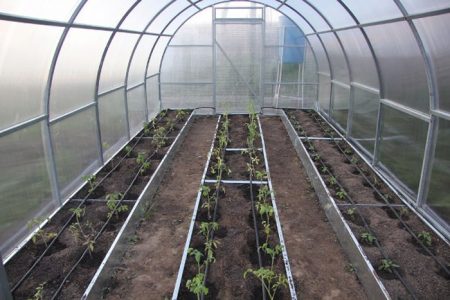
At this time, plants can be weakened, many even fade, fall off. Do not rush to immediately use stimulants and fertilizers. Allow the plant to adapt to new conditions on its own.
Also, before landing in a greenhouse, it is necessary to feed tomatoes. It is optimal to use a solution of potassium chloride or wood ash.
This approach will help to identify the most healthy sprouts, but you can only plant them, weakened or sick will die. If flowering tomatoes are transplanted, they must be sprayed with a solution of boric acid (teaspoon per liter of water). This will help prevent color fading.
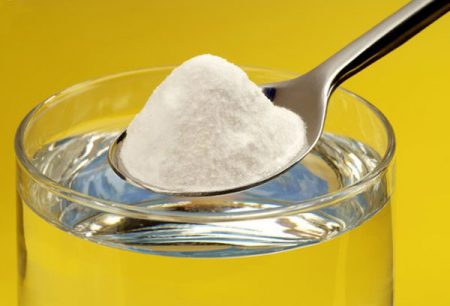
Planting seedlings in a greenhouse occurs according to a scheme similar to open ground. It is necessary to focus on the variety of tomatoes and recommendations for growing, but the minimum distance between the bushes should be 40 cm.
With a denser placement, the plants will not have enough light and nutrients from the soil, and it will be much more difficult to care for them.
First, dig holes of 20-30 cm in depth and pour each solution of potassium permanganate. Sprinkle with ash on top. Before landing, pour at least a bucket of water into each. Plant tomatoes on the root neck.
Watering and feeding after planting
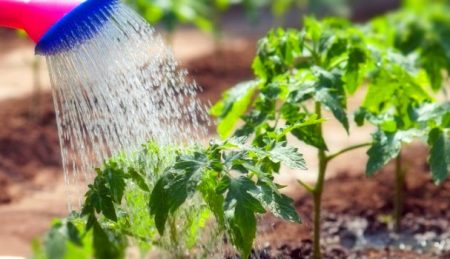
Wells before planting are watered so much so as not to disturb the sprouts. Then every 3-5 days it is necessary to sprinkle the earth with a layer of a couple of cm, but do not water it.
After 2 weeks, you need to carry out the first watering. Preliminarily, it is necessary to loosen the aisles and pour the settled water over them, and not into the holes.
After three weeks, top dressing is carried out. In 10 liters of water, dilute a spoonful of potassium sulfate, and ½ spoon of nitrate. Pour a liter per plant. The procedure is repeated once a month until the fruiting.
Further watering should be carried out as necessary, after the soil must be loosened.
How to save frozen seedlings
If, despite all the efforts, the seedlings are frozen, do not despair, there are proven ways to save her.

You can use store preparations, for example, "Epin", which is able to bring to life already even almost dead plants. Also, biostimulants come to the aid of gardeners. The instructions about this are rarely written, but for the best effect it is advisable to carry out the treatment in the evening, and then not water for two days. Also, the effect of drugs enhances citric acid. Literally a pinch on a bucket of the prepared solution will increase its efficiency by almost 2 times.
But there are simpler methods. Do not believe it, but for the "revitalization" and enough water. Of course, it should not be from the tap. It is best to use rain or spring, you can also dial a well. Plants should not be watered, but sprayed exclusively before sunrise.
You can trim the frosted seedlings. It's a pity, of course, but it is really possible to save frozen tomatoes. Even if you have to remove the stem almost at the root, do not hesitate. If the root system is normal, stepchildren will almost immediately grow.Yes, the harvest will be a little later, but it is better than its complete absence.
It is possible to get an excellent tomato crop even in difficult climatic conditions. Use the recommendations for growing in greenhouses, if you live in the suburbs, and you will be able to see first hand how simple it is.




 Low-growing tomatoes, without pinching: 5 of the most delicious varieties
Low-growing tomatoes, without pinching: 5 of the most delicious varieties Why tomato seedlings grow poorly
Why tomato seedlings grow poorly We grow a tomato in a shell
We grow a tomato in a shell Growing tomatoes without watering according to the method of Kazarin
Growing tomatoes without watering according to the method of Kazarin